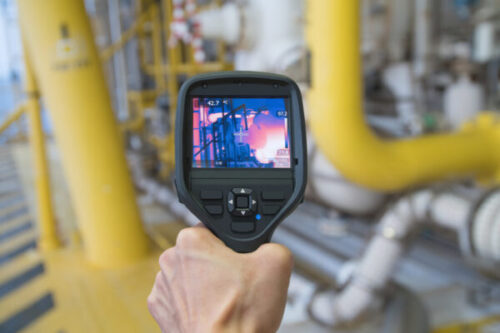Little Known Facts About Roar Solutions.
Little Known Facts About Roar Solutions.
Blog Article
Roar Solutions Fundamentals Explained
Table of ContentsWhat Does Roar Solutions Mean?The Only Guide to Roar SolutionsNot known Facts About Roar Solutions
In order to shield installations from a potential explosion an approach of analysing and identifying a potentially harmful location is called for. The function of this is to ensure the appropriate choice and installation of equipment to ultimately stop a surge and to make certain safety of life.
(https://roar-solutions.webflow.io/)
No equipment needs to be installed where the surface area temperature level of the equipment is higher than the ignition temperature of the offered hazard. Below are some typical dirt hazardous and their minimal ignition temperature. Coal Dirt 380C 225C Polythene 420C (thaws) Methyl Cellulose 420C 320C Starch 460C 435C Flour 490C 340C Sugar 490C 460C Grain Dirt 510C 300C Phenolic Resin 530C > 450C Aluminium 590C > 450C PVC 700C > 450C Residue 810C 570C The likelihood of the threat existing in a concentration high enough to create an ignition will certainly vary from area to place.
In order to identify this risk an installment is split right into locations of danger relying on the quantity of time the dangerous is existing. These areas are described as Zones. For gases and vapours and dirts and fibers there are 3 zones. Zone 0 Zone 20 A dangerous ambience is extremely likely to be present and may exist for lengthy durations of time (> 1000 hours per year) or perhaps continuously Zone 1 Area 21 A hazardous environment is feasible but unlikely to be existing for extended periods of time (> 10 450 C [842 F] A classification of T6 implies the minimum ignition temperature level is > 85 C [185 F] Dangerous location electrical devices perhaps made for use in higher ambient temperature levels. This would showed on the score plate e.g. EExe II C T3 Ta + 60C( This indicates at 60C ambient T3 will certainly not be gone beyond) T1 T1, T2, T3, T4, T5, T6 T2 T2, T3, T4, T5, T6 T3 T3, T4, T5, T6 T4 T4, T5, T6 T5 T5, T6 T6 T6 A T Class score of T1 suggests the optimum surface temperature generated by the instrument at 40 C is 450 C. Assuming the connected T Class and Temperature level rating for the devices are appropriate for the location, you can constantly utilize a tool with a much more strict Division ranking than needed for the location. There isn't a clear response to this inquiry. It actually does depend on the sort of tools and what repair work need to be accomplished. Equipment with particular examination procedures that can't be done in the area in order to achieve/maintain 3rd party rating. Have to come back to the factory if it is prior to the devices's service. Field Repair Work By Authorised Employee: Challenging screening may not be called for nevertheless certain treatments may need to be complied with in order for the equipment to keep its 3rd party ranking. Authorised workers must be utilized to carry out the job appropriately Repair have to be a like for like replacement. New element have to be considered as a direct substitute calling for no unique screening of the devices after the repair service is total. Each tool with a dangerous ranking must be assessed separately. These are described at a high degree listed below, however for even more detailed info, please refer straight to the standards.
Getting The Roar Solutions To Work
The tools register is an extensive database of tools documents that consists of a minimum collection of areas to determine each thing's place, technical criteria, Ex lover classification, age, and environmental data. The ratio of Detailed to Close inspections will certainly be determined by the Equipment Risk, which is analyzed based on ignition risk (the probability of a resource of ignition versus the probability of a flammable atmosphere )and the dangerous area classification
( Zone 0Area 1, or 2). Carrying out a durable Risk-Based Evaluation( RBI )technique is important for making sure compliance and safety in handling Electric Equipment in Hazardous Areas( EEHA).
The Best Guide To Roar Solutions

In terms of eruptive danger, a harmful location is an environment in which an explosive atmosphere exists (or may be expected to be present) in quantities that call for unique safety measures for the building, installment and usage of equipment. eeha. In this short article we check out the obstacles faced in the workplace, the threat control steps, and the required expertises to work securely
It issues of modern-day life that we make, save or handle a variety of gases or liquids that are regarded flammable, and a variety of dusts that are considered combustible. These substances can, in particular problems, develop explosive atmospheres and these can have significant and awful consequences. The majority of us know with the fire triangular eliminate any type of among the 3 components and the fire can not take place, however what does this mean in the context of dangerous locations? When damaging this down into its simplest terms it is basically: a mix of a particular amount of release or leak of a particular substance or material, combining with ambient oxygen, and the presence of a source of ignition.
In most circumstances, we can do little about the degrees of oxygen airborne, yet we can have substantial impact on sources of ignition, as you can look here an example electrical devices. Unsafe areas are documented on the harmful location classification drawing and are determined on-site by the triangular "EX-SPOUSE" indication. Below, amongst other essential details, zones are split into 3 types relying on the danger, the probability and duration that an explosive atmosphere will certainly exist; Area 0 or 20 is regarded the most unsafe and Zone 2 or 22 is regarded the least.
Report this page